Keeping Your Ride Safe: Comprehensive Guide to Protecting Your Existing Vehicle
Anti-Theft Measures: Foiling Potential Carjackers
Let's start with the obvious – keeping your car from being stolen! Car theft is a real concern, and there are several layers of protection you can implement.
Basic Security: Always lock your doors and roll up your windows, even when parked for just a few minutes. Avoid leaving valuables in plain sight. A smartphone, purse, or even loose change can be enough to entice a thief. Consider hiding items under the seats or in the glove compartment.
Steering Wheel Locks: These old-school devices are still surprisingly effective. A visible steering wheel lock acts as a deterrent and makes it significantly harder for a thief to drive off with your car.
Car Alarms: A properly installed car alarm system is a must-have. Look for systems with features like shock sensors, tilt sensors, and GPS tracking. A loud alarm can scare off potential thieves, and GPS tracking can help authorities recover your vehicle if it is stolen.
Immobilizers: These devices prevent the engine from starting unless the correct key or code is used. They're a great way to deter theft because even if a thief gets into your car, they won't be able to drive it away.
Tracking Devices: GPS trackers allow you to monitor your car's location in real-time. Many trackers offer geofencing capabilities, which alert you if your car leaves a predefined area. This can be invaluable in recovering a stolen vehicle.
Protecting Your Car from the Elements: Weatherproofing Your Ride
The weather can wreak havoc on your car's exterior and interior. Sun, rain, snow, and hail can all cause damage over time. Here's how to fight back:
Garage or Carport: The best way to protect your car from the elements is to park it in a garage or carport. This provides shelter from the sun, rain, snow, and hail.
Car Covers: If you don't have a garage or carport, a car cover is the next best thing. Choose a high-quality, breathable cover that fits your car snugly. This will protect your paint from fading, scratches, and bird droppings.
Waxing and Sealing: Regularly waxing your car helps protect the paint from the sun's UV rays and other environmental contaminants. Applying a sealant adds an extra layer of protection and helps your car stay cleaner for longer.
Interior Protection: Use sunshades to protect your dashboard and seats from fading and cracking. Consider using seat covers to protect your upholstery from spills and stains. Regularly vacuum and clean the interior to prevent the buildup of dirt and grime.
Rust Prevention: In areas with snow and salt, rust can be a major problem. Regularly wash your car, especially the undercarriage, to remove salt and other corrosive materials. Consider applying a rust inhibitor to protect vulnerable areas.
Preventative Maintenance: Keeping Your Car Running Smoothly
Regular maintenance is crucial for extending the life of your car and preventing costly repairs. Follow your car's maintenance schedule and address any issues promptly.
Oil Changes: Regular oil changes are essential for keeping your engine running smoothly. Follow your car manufacturer's recommendations for oil change intervals.
Fluid Checks: Regularly check all fluid levels, including coolant, brake fluid, power steering fluid, and transmission fluid. Top off fluids as needed and address any leaks immediately.
Tire Maintenance: Keep your tires properly inflated and rotated. Check the tread depth regularly and replace tires when they are worn. Properly inflated tires improve fuel economy and handling.
Brake Inspections: Have your brakes inspected regularly to ensure they are in good working order. Replace brake pads and rotors as needed.
Tune-Ups: A tune-up can improve your car's performance and fuel economy. Tune-ups typically include replacing spark plugs, air filters, and fuel filters.
Safe Driving Habits: Protecting Yourself and Your Car
Your driving habits play a significant role in protecting your car. Safe driving habits can help prevent accidents and reduce wear and tear on your vehicle.
Defensive Driving: Practice defensive driving techniques, such as maintaining a safe following distance, anticipating the actions of other drivers, and avoiding distractions.
Avoiding Aggressive Driving: Aggressive driving, such as speeding, tailgating, and weaving in and out of traffic, increases your risk of accidents. Drive calmly and responsibly.
Driving Under the Influence: Never drive under the influence of alcohol or drugs. This is not only illegal but also extremely dangerous.
Distraction-Free Driving: Avoid distractions while driving, such as using your phone, eating, or adjusting the radio. Focus on the road and your surroundings.
Proper Load Distribution: When carrying heavy loads, distribute the weight evenly to avoid putting excessive stress on your car's suspension and tires.
Insurance Coverage: Protecting Your Financial Investment
Having adequate insurance coverage is essential for protecting your financial investment in your car. Review your insurance policy regularly to ensure it meets your needs.
Liability Coverage: Liability coverage protects you if you are at fault in an accident. Make sure you have enough liability coverage to protect your assets.
Collision Coverage: Collision coverage pays for damages to your car if you are involved in an accident, regardless of who is at fault.
Comprehensive Coverage: Comprehensive coverage pays for damages to your car caused by events other than collisions, such as theft, vandalism, fire, and natural disasters.
Uninsured/Underinsured Motorist Coverage: This coverage protects you if you are involved in an accident with an uninsured or underinsured driver.
Gap Insurance: If you have a loan on your car, gap insurance can cover the difference between what you owe on the loan and the car's actual cash value if it is totaled in an accident.
Conclusion
Protecting your vehicle is a multi-faceted endeavor, encompassing everything from anti-theft measures and weather protection to preventative maintenance and safe driving habits. By taking these steps, you can maximize the lifespan of your car, minimize the risk of theft or damage, and maintain its value. Remember, a little effort goes a long way in keeping your beloved ride safe and sound!Where can I find my VIN?

Related Topics
- Is a Mercedes-Benz Extended Warranty a Smart Investment? A Cost-Benefit Analysis.
- Seamless Transitions: Your Guide to Transferring an Infiniti Warranty When Selling or Trading In
- The Fine Print: What's Not Covered by Your Hyundai Warranty?
- Is a BMW Extended Warranty a Smart Investment? A Cost-Benefit Analysis.

